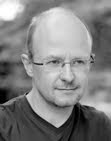Wanderlust
 Recently I have written a little Amazon-review of Rebecca Solnit’s “Wanderlust – A History of Walking”. Although this book primarily offers a political perspective on the last 300 years of walking, Solnit also writes intelligently about the phenomenology of bipedal propulsion. And this is also valuable for photographers, at least for those who like to exercise their craft on foot.
Recently I have written a little Amazon-review of Rebecca Solnit’s “Wanderlust – A History of Walking”. Although this book primarily offers a political perspective on the last 300 years of walking, Solnit also writes intelligently about the phenomenology of bipedal propulsion. And this is also valuable for photographers, at least for those who like to exercise their craft on foot. According to Solnit, walking leads to a productive alignment between mind, body and world. Indeed, the link between thinking and walking goes way back. Philosophers, poets and healers have been travelling on foot since the dawn of our cultural history. Extrapolating Solnit's hypothesis to the photographic era one could add a variable to the equation and say that walking leads to an alignment between mind, body, world and the lens of our camera.
I believe that a walking photographer is not the same as the stationary photographer. The "walking photographer" forms a indissoluble complex with the "camera". It is a whole that subjects itself to the vagaries and unpredictabilities of the journey. The element of chance is crucial. And whoever has spent a couple of days on the trail will know that once the rhythm has settled, one becomes much more alert to all kinds of sensory inputs. Also this alertness is crucial. So, openness to chance and alertness reinforce one another, disclosing an ever shifting photographic opportunity space.
The cover of Solnit's book shows a fascinating photograph by Roger Fenton, dated 1858: "The Long Road to Windsor".


0 Comments:
Post a Comment
<< Home